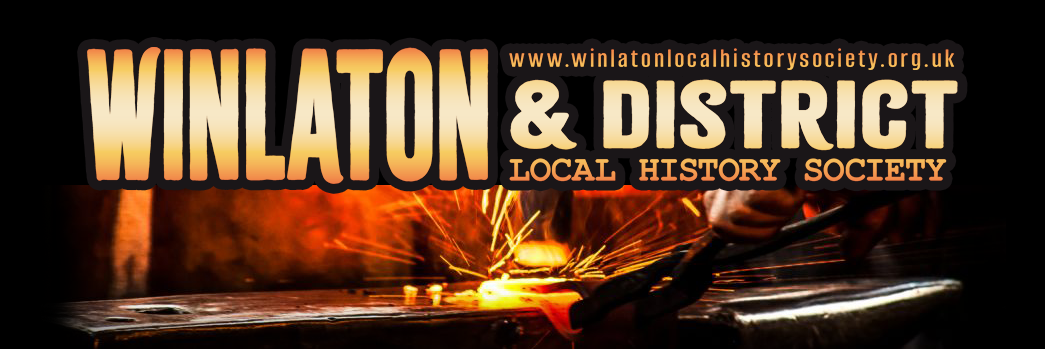Winlaton seems to have had a surfeit of public houses and beer houses compared with other villages of comparable size. No doubt owing to the occupations of the villagers the thirsts which had to be quenched were greater than normal. Although we still have a fair number of public houses left in Winlaton there has been a gradual reduction in the past years. At Blaydon Burn stood the “NEW INN“, which, in its day, was the meeting place for the shooting fraternity of the district.
There was a time when there were 11 public houses and 2 clubs from Commercial Square up Front Street, West Lane & Low Town End. When also, this area was not surrounded by housing estates as at present – but by fields, gardens, farmsteads, blacksmiths shops and only a few houses here and there. Some of the premises are still there but have been renovated and brought up to modern standards and a few names have changed. Pubs from Commercial Sq. were: Commercial Hotel, Old House, Highlander Inn, Queen’s Head Hotel, Front Street Social Club, Smiths Arms Hotel, New Inn, Royal Oak Hotel, Crown & Cannon, The Vulcan, Ye Turf Hotel, West End Club and Rose & Crown.
In 1767 there stood another public house in Winlaton named the DUKE WILLIAM, the site of which is unknown, but was probably built after 1746 and named after the victor of Culloden, William, Duke of Cumberland, while a beer house named THE PLOUGH was situated next to the Rose & Crown.
THE BLACK BOY
This pubic house named after King Charles II, was further down than the Queens Head at the end of that terrace of houses. Frank Kojay, writing in the 1950s, tells us that the Black Boy was much favoured by the Irish fraternity, refugees from the Irish famine. The Revd. Tebb of the Congregational Church nearby caused this public house to be pulled down around 1910 because it spoilt the surroundings or rather it was situated opposite his church.
THE COMMERCIAL
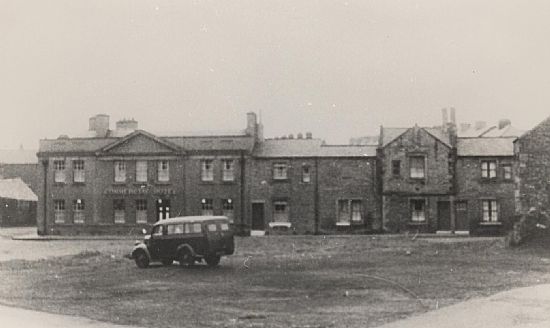
The Commercial, which was mentioned in an article about the village in 1885, has undergone changes in its structural appearance in the early 20th century, particularly its frontage and side entrances. It was known as the Corner House and seems to have been used for public functions such as inquests, public meetings, sports and flower shows. Indeed The Commercial was noted for its quoits team.
No longer a public house although the building is still in existence.
OLD HOUSE
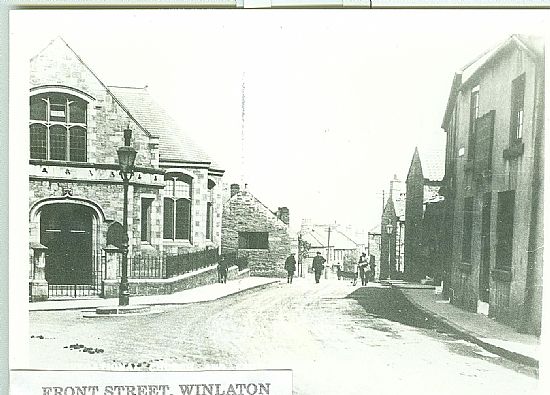
The Old House, at the right of the picture, is not in existence although the ground upon which it stood near the present Highlander has a house built there now. These premises were demolished during March/April 1938 after being for a while a dwelling house only. Prior to that it was a public house. Above the door there used to be a large board on which read “Winlaton Old House, Robert Evans, Licensed to sell Ales, Porter and Tobacco”. Aforementioned Robert Evans who was known locally as ‘Lucky Bobby’ and following on came ‘Lucky Bobby’s’ son Joseph.
One of the reasons for the growth of drinking establishments during the 18th century was the popularity of gin. It was King William III who, in 1690, dissolved the Distiller’s monopoly, thus allowing anyone to start up their own distillery simply by giving ten days notice to the excise. With the government imposing heavy duties on imported spirits, domestic distilleries sprang up everywhere. Gin was cheap and, as a result, it was very popular with the poor. Beer had always formed a staple of people’s diet and although it was alcoholic, beer provided nutrition and, in the 18th century, it was safer to drink than water. Gin, on the other hand, was viewed with great disdain by social reformers and by the 1820s & 1830s the Government was keen to promote beer drinking instead of spirits, especially gin. Widespread drunkenness through gin consumption was believed to be detrimental to the working class and this had led to the rise of the Temperance Society which campaigned for closure of the ‘gin shops’. The former drink of the working man, beer, was taxed which meant the cost of beer could be prohibitive to the working classes despite the fact that beer was safer to drink than water. Water at this time was untreated and dangerous to drink. The Beerhouse Act of 1830 was introduced by the Duke of Wellington’s Tory government. It abolished the beer tax, extended the opening hours of licensed public houses, taverns and alehouses to 18 hours a day. Previously it was 15 hours. These were subject to the control of the local justices and a license was required. The Act also introduced the Beerhouse and Beershops – premises which could sell only beer. The opening hours could be from 4am to 10pm. For a small fee of 2 guineas payable to the local excise officer, anyone could brew and sell beer. The excise licence would state whether the beer could be consumed on the premises (beerhouse) or as off-sales only (beershop). Supervision of these establishments by local justices was severely curtailed which led to many local complaints by magistrates and local gentry keen to control the working classes in their area.
THE HIGHLANDER
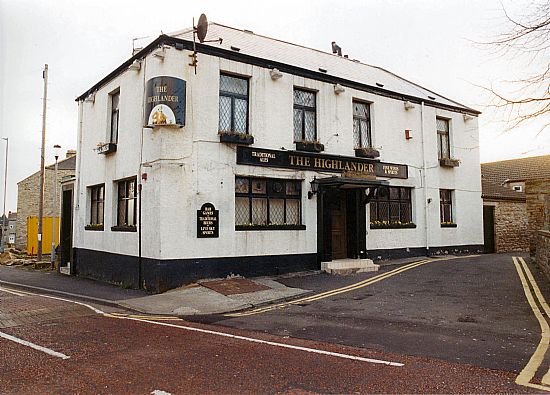
The Highlander is thought to date from the early 1800s and was certainly in business in the 1830s when Winlaton was the Northern headquarters of the Chartist movement. The movement was strongly supported by the Cowen family and leaders including George Julian Harney, Dr. Taylor, Sir John Fife, Samuel Kydd and John Emmerson regularly addressed public meetings on the Sandhill. In 1839 they held a tea for George Harney in the upstairs room of The Highlander. Women were strongly represented and there was singing and dancing accompanied by the Winlaton Patriotic Band, the walls of the inn being covered with crimson & green hangings and portraits of the leaders. After supper the final toast was given by George Harney to ‘The health & happiness of the canny lasses of Winlaton’ – presumably they’d provided the tea & cakes !
QUEEN’S HEAD HOTEL
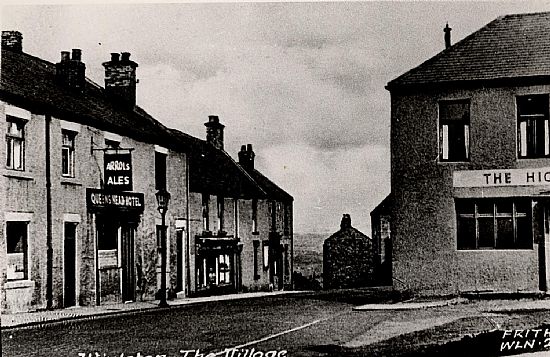
Housed in one of the oldest buildings in Winlaton this public house was known as The Queen’s only. In 1952, after some renovation it was given the sign ‘Queen’s Head Inn’. During those years of later alterations an extension came by taking over a fried fish and chip shop which used to be between the pub and the present day fish & chip shop, which used to be the Post Office of Mrs. Gore.
FRONT STREET SOCIAL CLUB/HALLGARTH SOCIAL CLUB
HALLGARTH HALL
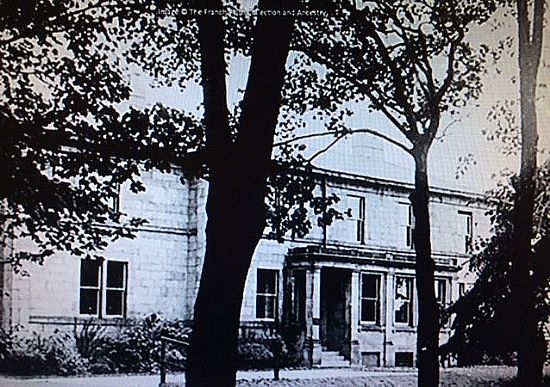
A Joseph Laycock came from Yorkshire to be a factory manager for Crowley’s in Winlaton. He took up residence at Well House in Oldwell Lane. He was succeeded by Robert Laycock who had 3 sons – Joseph, Richard and Robert. Joseph was born in 1798 and built Hallgarth Hall in 1835. Joseph Laycock later built another house in Gosforth, Newcastle upon Tyne. He became Mayor of Newcastle in 1858, he was a Justice of the Peace for Durham and Northumberland and for many years Chairman of the Blyth and Tyne railway and died in 1881.
The Hall was owned by Herbert Wylam Grace from c1886 until his death in 1925. He was owner of a paper manufactury in Newcastle, a colliery proprietor, director of Bebside Coal Co. and County Magistrate for Durham. After the death of Herbert Grace a Mr. D. Ireland, a market gardener of Ponteland, owned the house.
A working men’s social club was opened in the early 20c in a former private dwelling in Front Street. When the Social Club was gutted by fire in 1947 the club bought Hallgarth Hall. The Social Club built various extensions to the building in the 1950s and 1960s rendering the original house unrecognisable. Eventually, the Social Club ran into financial difficulties and closed their doors. The Hall was sold and demolished in 2016 with housing being built on the site. Most of the garden is now owned by Gateshead Council and used as a public space but the original boundary wall can still be seen. The lane running alongside the stone wall which forms the boundary was known as ‘Love Lane’
GHOST OF LOVE LANE
The story is that a young maidservant at the hall used to meet her lover, a young miner from Blaydon Burn Colliery at 6.00pm every evening. Eventually the inevitable happened and she became pregnant. Upon hearing the news the ardour of the young man began to wane. Fretting over being deserted by the young man she would stand in the lane every evening sobbing, hoping he would come back to her. When the child was born the maidservant and her baby died, but the sobs echoed on! For years afterwards many refused to go down the lane in the evening due to hearing the sounds of sobbing and the uncanny feelings of a presence. The sounds stopped in 1900 at the time it was reported that the errant lover had been killed in an accident at the mine.
SMITHS ARMS HOTEL/THE CLOCK
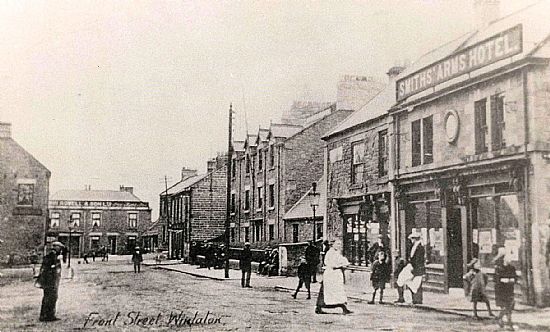
The Smith’s Arms or the Blacksmith’s Arms was known locally as The Clock in the 20th. century because of a large clock adorning the front above the entrance to the building. On the signboard was ‘Smith’s Arms Hotel’. These premises were destroyed by fire on 28 December 1928. It stood on the south side of the Sandhill (new housing on that site now ) and was described in 1760 as consisting of “seven good fire-rooms, with a brew-house and brewing vessels, malting stable and cockpit thereto belonging”. Between 1745 and 1759 it was tenanted by one Joseph Errington, who, besides running the pub, was also a barber, bookmaker and a part time auctioneer. Behind the pub during Errington’s occupation was the village cockpit. At an auction sale here at the Smith’s Arms in the year 186O, a woman living at Dockendale Hall, (NB: at Blaydon Burn NOT the house of the same name in Whickham) bought an old bureau for 4/6d. After the sale, she with difficulty prevailed upon a nailer, a neighbour to assist her in removing it, he, in forcing it open by the middle, discovered some papers and loose gold. Together they made it fast again; collected more help and took the bureau away whole. In getting it out, one of the papers fell and the gold jingling was noticed by one of the assistants, but the nailer saying it was only a bag with a few nails he had put out of his pocket, was believed. After getting it home and dismissing the assistant, the purchaser and her friend went to work and took it to pieces and were paid for their trouble with several purses and papers of gold to a considerable amount. She gave the nailer five papers untold, which enabled him to pay his debts and purchase a house and a blacksmith’s shop to work in, which “amounted to upwards of £200” and was told by her to apply again if he wanted more, but he was satisfied and looked upon it as a particular case of providence, being “deep in debt and out of work, with a sick wife and a small family”. It was remarkable that this piece of furniture had passed through several sales during the preceding forty years; that none of the gold was of a later coinage than James II; and was in possession of an opulent family in the neighbourhood of Newcastle in the year 1715.
NEW INN
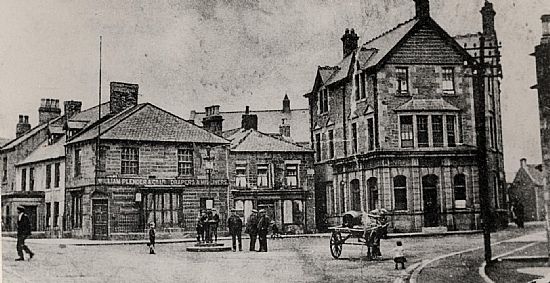
The New Inn stood opposite the Crown & Cannon on Sandhill and was considered the highest building in the village at the time, certainly of the public houses. Built in the early 1800s the landlord was John Cowen, father of Joseph Cowen Snr. John Cowen had been a Crowley’s smith and as well as being the landlord of the New Inn owned a successful forge. After Crowley’s had left Winlaton the remaining smiths, mindful of the social benefits of Crowley’s, set up the first meeting of the Winlaton Blacksmith’s Friendly Society here at the New Inn in 1826. Formed by twelve Winlaton smiths for ‘the mutual relief of each other when in distress and for other good works’. There was a fund for old age, sickness & infirmity to which all members subscribed. Members had to aged 18-28 and be able to earn a competent livelihood. Mariners, pitmen and pensioners were not admitted. Joseph Cowen Snr was the first secretary of the Society and the meetings were held at the New Inn on the first Saturday of each month at 6pm. The Cowen family were Winlaton’s most notable family with Joseph later becoming MP for Newcastle and Chair of the Tyne Improvement Commission, for which work he was knighted, among many other achievements. His sons Joseph and John were no less notable and their careers are written elsewhere.
The building was renovated in the early 1900s The last landlord there was the late Mr John William Robson better known locally as ‘trader’ who died in 1943. His widow the late Mrs Catherine Robson lived for a while in part of the premises as a dwelling house. Before its demolition, the make way for providing the present thoroughfare, it was used as a youth club headquarters as well an Army billet during the 1939-45 war for ‘Inns of Court‘ regiment. After standing derelict demolition started in October 1949 and was complete by December of that year.
THE ROYAL OAK
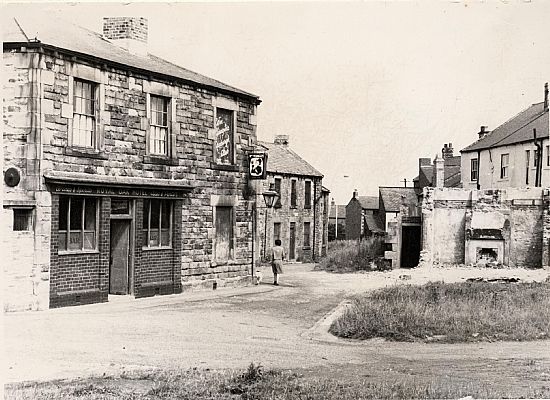
In Back Street stood a very old pub, “The Royal Oak“, being better known as Carson’s after its tenant of many years standing or sometimes jokingly as the “Cricketers Arms” through the members of Blaydon Cricket Club meeting here after their matches. Surprisingly there were Chapel meetings held in the Long Room. This information was provided by William Bourn, the late and much quoted local historian, who wrote about the Wesleyan Methodists having services ‘in the long room of the Oak Tree Public House in 1828 which for a period of ten years before they were able to build their own chapel’. It was here also, that the Chartists held their meetings in the period of near civil war in 1839. Mr Carson’s daughter and son-in-law, Mrs & Mr Ron Hopper, followed on and were there for several years. It was in the early 1960s that the ‘Oak’ was demolished making way for modern road development.
CROWN & CANNON INN
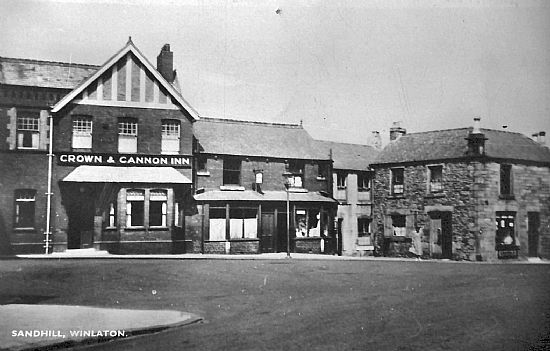
As can be seen by the inscription above the doors of the ‘Crown & Cannon’ this was built in 1780 and the old stone building was demolished and rebuilt in 1904 in red brick.
THE MYSTERIOUS RED CROSS
On 5 November 1860 a casual meeting in a public house led to a tragedy. John Batey from Cuthbert Street in Blaydon was a slater employed by Joseph Cowen. He was a respectable hard working married man with three children. He had been to Blaydon Burn to make arrangements for a clay pigeon shoot when he called in for a drink at the Crown & Cannon in Winlaton on his way home. This would be about 8pm.
He told the landlady, Mrs Jane Parker, that he didn’t intend to stay long. But drink loosens tongues and he fell into conversation with Thomas ‘Lankie’ Smith and other men. It seems bets were being made & Batey had produced a half-sovereign with which to wager. This coin was to cost Batey his life. The men left the public house just before midnight after the landlady refused to serve them any more drink. Smith offered to walk home with Batey and this was the last time Batey was ever seen alive. The next morning Batey’s murdered body was discovered lying at the top of Blaydon Bank and Smith was nowhere to be found. The hue and cry was raised and for a week the officers of the law searched for Smith without any success. Smith was discovered in Whitby the next week when someone recognised him from a description in a newspaper. Smith was arrested, brought back to Gateshead wearing the very same trousers and boots he had stolen from Batey on that fateful night. He admitted his guilt and on 27 December of the same year he was executed.
Now this is the mysterious part – on the stone wall next to where Batey’s murdered body was found a cross has been carved in the stone wall. It is painted red every year – by whose hand we do not know – but the cross is always bright and clear – a reminder of the dark deed carried out that fateful night in 1860.
THE TURF
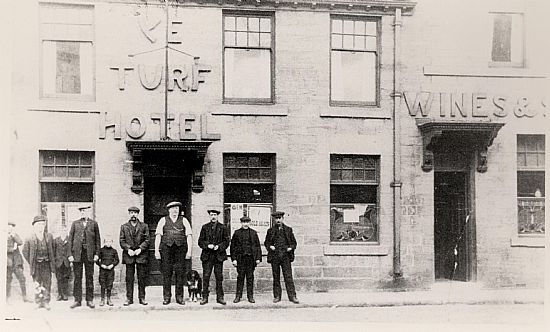
Near the Sandhill is “The Turf“, which in the days of Crowley was known as the “White Swan“. The old publicans seem to have had many sidelines but of course they were not restricted by licensing laws as they are today. John Crowley’s eldest son, named after his grandfather Ambrose, was born on 14 August 1718 and every year his birthday was celebrated with horse racing at Snook Hill, foot-racing in the Hall Garth and cock-fighting at the “Blacksmith’s Arms“. The publicans were the only ones allowed to sell refreshments at these functions. The foot racing was open to both men and women In 1746 it is recorded that the men ran for a prize of one guinea ( £1-05p) and the women ran for a smock valued at 8s (40p).
VULCAN
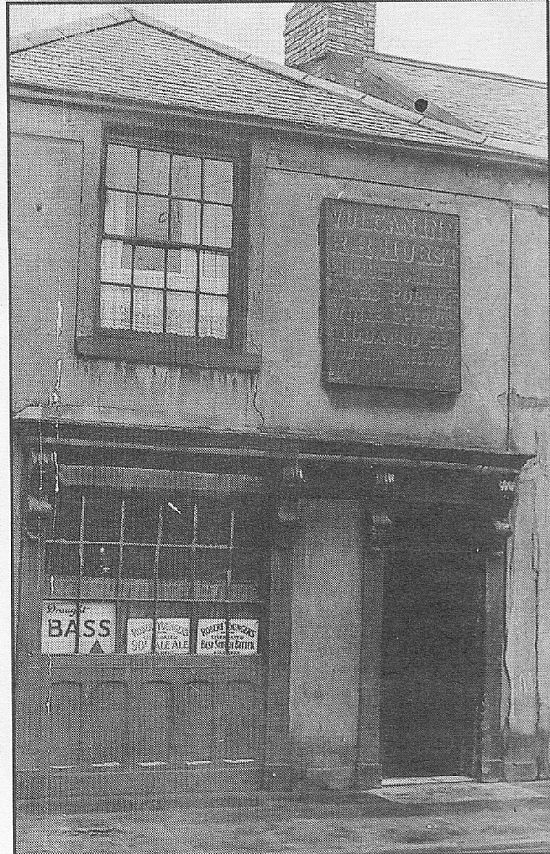
The “Vulcan“, not surprisingly, is named after the patron saint of smiths. This tavern seems to have been used for public functions such as inquests, public meetings, sports and flower shows, later extensions date from the 20th century.
ROSE & CROWN
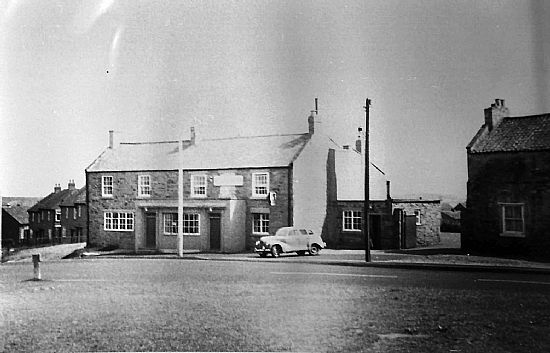
The Rose and Crown in North Street is reputed to be the oldest tavern in the area. Oliver Cromwell passed through Winlaton in 1650 – he had rested his horses at Whickham for 2 days, crossed the river at Winlaton Mill then through Winlaton and down to Stella to cross the Tyne and on to Scotland to fight General Leslie. We’ll never know if his soldiers stopped at the Rose & Crown for a pint but it was almost certainly there in 1650 as renovations in later centuries uncovered a stone lintel inscribed “Thomas Wall and his son rebuildeth this house 1656” which indicates it was built some years earlier. The building has undergone several renovations and extensions over the years and continues to be known familiarly as the “Laa Toon End”. Next door to the Rose and Crown stood a beer-house of which little is known except that it was named the PLOUGH. This building appears on early maps of the area although we don’t know when it stopped trading. It has been demolished but both this and the Rose & Crown were well placed at the junction of the roads leading to Blaydon and Blaydon Burn
WEST END CLUB
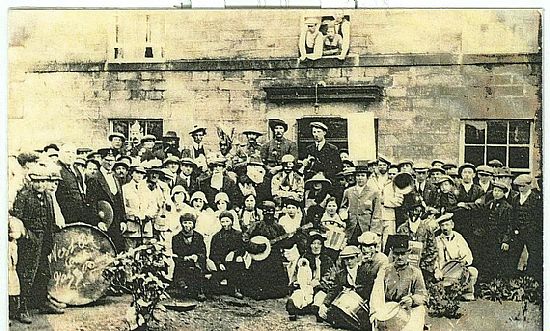
Caledonia House in Caledonia, Winlaton was one of a number of stone dwellings built in the 1850s by self employed blacksmiths who had started working on their own account after Crowley’s pulled out after the Naploeonic wars. The building became a working men’s social club in 1918 and they held their first Special General Meeting on 13 November 1918. The first committee was elected and the first stewardess, Mrs Coxon, was appointed at a wage of £2 10s per week. The club was officially opened on 28 November by Mr T. Richardson, the Chairman of the Durham Club Union. Since then the building has undergone many extensions and renovations and continues to thrive as a private members’ club.
